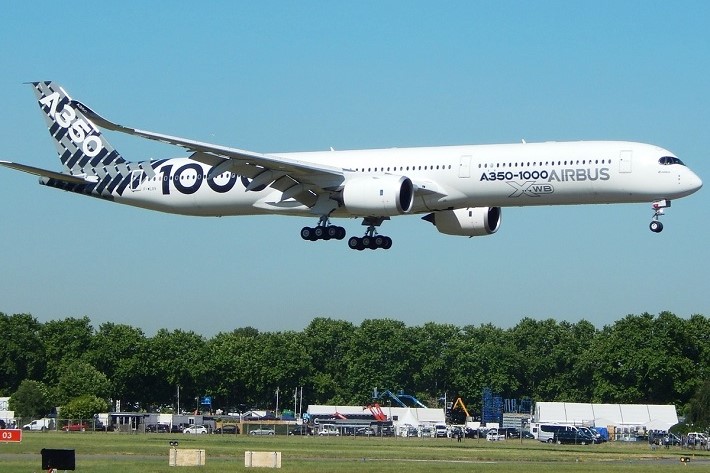Progress in additive manufacturing (AM) for aerospace continues apace, as an increasing number of 3D printed parts are incorporated into increasingly functional roles in aircraft. The latest is a complex component for the Airbus A350 passenger aircraft, which will be 3D printed by its partner Liebherr-Aerospace Lindenberg GmbH.
A German division of the Swiss Leibherr Group, Liebherr Aerospace will be supplying Airbus with a metal 3D printed actuator and valve for the lower cargo door of the A350. The part is an advancement on the company’s previous AM work with the aviation giant.
AM collaboration between the two began as far back as 2017, when Leibherr 3D printed a spoiler actuator valve block for the A380. It 2019, the partnership evolved to serial production of 3D printed proximity sensor brackets for the nose landing gear of the Airbus A350 XWB. Those components were clearly important for the functioning of these systems, but Liebherr is saying that the latest is even more complex.
Interestingly, Liebherr is also supporting what is said to be a competitor to Airbus, China’s state-owned COMAC, for whom it is building the landing gear subsystem. 3D printing has yet to be incorporated into the partnership publicly, but it’s worth noting that Liebherr has access and is developing landing gear parts for both companies.
When Airbus envisioned a fully 3D printed aircraft about a decade ago, it was hard to imagine the idea coming to fruition. However, that concept is being realized more and more every day. Just this June, Lufthansa announced that it had certified a load-bearing metal 3D printed part for Airbus’s A320 airplane.
Executive editor Joris Peels has expressed his concern with the implementation of these types of components on flying aircraft. He suggested that, because every printed part is built up layer by layer, variation exists across builds and the parts themselves. This is an issue well-known in the AM industry, yet we’re seeing a greater number of 3D printed components in end use applications, including passenger cars and aircraft.
While we can caution their use, we may also begin to wonder if these companies have proprietary methods for validating every item 3D printed. Perhaps, due to their size, corporations like Airbus and GM can CT scan and qualify every 3D printed part for use. Or perhaps they’re willing to take the risk of installing critical elements onto passenger vehicles.
Subscribe to Our Email Newsletter
Stay up-to-date on all the latest news from the 3D printing industry and receive information and offers from third party vendors.
Print Services
Upload your 3D Models and get them printed quickly and efficiently.
You May Also Like
Lightweight and Durable: Reinventing UAVs with HP 3D Printing
For engineers designing unmanned aerial vehicles (UAVs), every gram matters. Weight, durability, and design flexibility are critical to achieving longer flight times, more agile maneuverability, and reliable performance—especially in remote...
Alloyed Business Argive Making 3D Printed Micro Turbine Engine for MGI Engineering Drone
Micro turbines are featherweight power plants that pack a punch, and are being used in many missiles, as well as an increasing number of drone platforms. In 2020, we looked...
Steadfast XO: Will USVs and UUVs Disrupt Existing Naval Power?
A quiet revolution is underway in Unmanned Surface Vehicles (USV) & Unmanned Underwater Vehicles (UUV). Ukraine didn’t have much of a Navy when Russia invaded, but has been able to...
3D Printing News Briefs, April 16, 2025: AM Award Winners, Cold Spray, Drones, & More
We’ve got some more news from last week’s RAPID+TCT to kick off today’s 3D Printing News Briefs, and then moving on to some interesting pieces of military AM news. Read...


































